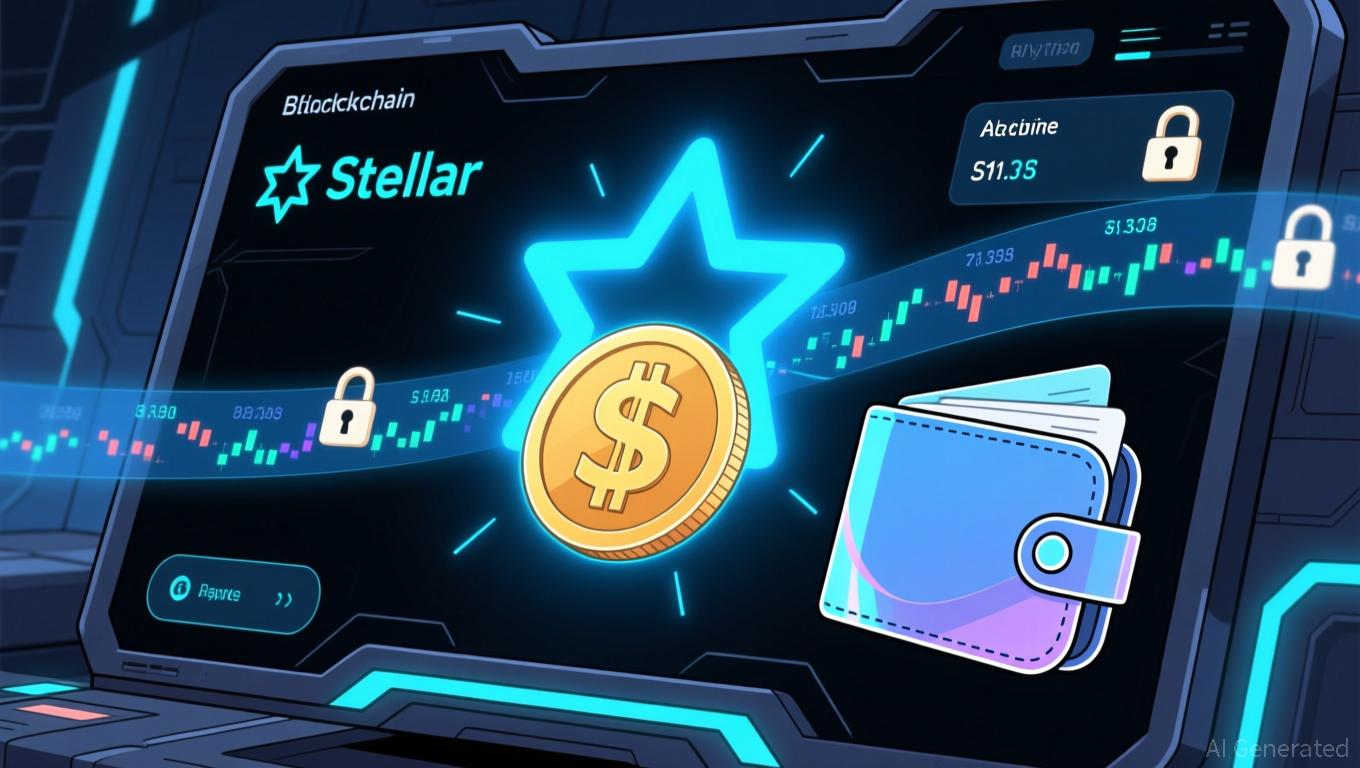The MMT Token TGE and What It Means for New Blockchain Ventures
- 2025 blockchain industry faces dual narratives: institutional-grade innovation (MMT Token) and speculative chaos (Melania Meme Token). - MMT Token (Sui-based) gains institutional backing and regulatory alignment, using buybacks/burns to stabilize liquidity and attract $12B DEX volume. - Melania MMT collapses 99% due to centralized control (89% supply in single wallet), exposing risks of governance flaws and regulatory scrutiny. - Emerging projects must prioritize compliance, sustainable tokenomics, and r
By 2025, the blockchain sector is defined by two contrasting themes: advanced institutional progress and rampant speculative activity. The
The MMT Token TGE: Institutional-Grade Advancement
The MMT Token TGE, operating on the
Performance indicators further validate its achievements:
Speculative Token Dangers: The Melania
Meme
Token (MMT)
On the other hand, the Melania Meme Token (MMT) illustrates the dangers of speculative memecoins. After briefly reaching $13.73 in 2025, its value plummeted by more than 99% to $0.1004, largely due to centralized ownership (with 89% of tokens in one wallet) and a lack of transparent governance
The existence of both MMT tokens reflects a broader pattern in the industry: while institutional DeFi and tokenized real-world assets (RWAs) are gaining momentum, speculative ventures remain at risk due to market mood swings and poor governance.
Takeaways for New Blockchain Initiatives
For startups, the contrasting stories of the MMT Token TGE and its
Second, sustainable tokenomics are crucial. The MMT Token’s buyback and burn approach is intended to manage supply and volatility, a tactic that new projects can adopt to create more stable ecosystems. In contrast, the Melania Meme Token’s concentrated ownership highlights the importance of open, decentralized governance
Third, strong technical infrastructure is indispensable. The MMT Token’s deployment on Sui’s high-performance blockchain demonstrates the value of scalable and interoperable platforms for real-world use cases
Looking Ahead: Merging Innovation with Regulation
Although the MMT Token TGE highlights blockchain’s transformative potential for finance, it also reveals the sector’s significant risks. For new ventures, the post-MMT environment requires a careful balance: harnessing advanced technology, meeting regulatory demands, designing tokenomics for lasting value, and ensuring transparency to foster trust.
Investors, for their part, should evaluate TGEs with these factors in mind. Projects that emphasize compliance, institutional alliances, and resilient tokenomics—like the MMT Token—are better positioned to weather market turbulence and regulatory challenges. In contrast, those that depend on hype and centralized power, as with the Melania Meme Token, will struggle to gain credibility.
As 2025 unfolds, the blockchain world faces a pivotal moment. The stories of the MMT Token TGE and its speculative counterpart show that true success depends not only on technological breakthroughs, but also on meeting the rising expectations of a more mature market.
Disclaimer: The content of this article solely reflects the author's opinion and does not represent the platform in any capacity. This article is not intended to serve as a reference for making investment decisions.
You may also like
Stellar News Today: Connecting Traditional Banking with Blockchain: U.S. Bank Pilots Stablecoin for Around-the-Clock Transactions
- U.S. Bank tests dollar-backed stablecoin on Stellar blockchain for 24/7 payments, leveraging its asset-freeze capabilities. - The initiative addresses banking clients' needs for compliance, transaction flexibility, and real-time cross-border solutions. - Industry trends show growing stablecoin adoption by institutions like Citigroup and Western Union amid rising payment costs. - Regulatory challenges persist, but Stellar's institutional focus and $32B annual volume highlight its appeal for digital asset

AI’s Uncertain Path Forward: Alibaba’s Three-Year Strategy Faces Investor Skepticism
- Alibaba CEO Daniel Zhang rejects AI "bubble" fears, predicting sustainable growth for at least three years despite market volatility. - AI sector faces valuation challenges as firms like C3 .ai and Nvidia see sharp stock declines despite strong earnings, with investors shifting to defensive sectors. - Startups like PetVivo AI demonstrate AI's disruptive potential in under-digitized markets, achieving 50–90% cost reductions in veterinary client acquisition via SaaS. - Industry divides persist between Alib
Bitcoin News Today: "Texas Secures Bitcoin as Modern Gold, Wagers on Protection Against Inflation"
- Texas becomes first U.S. state to allocate $10M in Bitcoin via BlackRock’s IBIT ETF, establishing a Strategic Bitcoin Reserve. - Legislation signed by Governor Greg Abbott authorizes long-term Bitcoin holdings as a hedge against inflation and diversification tool. - Move aligns with global institutional adoption trends, including Harvard’s $442.8M IBIT increase and New Hampshire’s Bitcoin-backed bond. - Critics warn of volatility risks, while proponents highlight Bitcoin’s decentralized value and five-ye

Solana News Update: Major Institutional Investments Pour Into Solana ETFs While Bitcoin Funds Experience Outflows
- Over $1B in Solana tokens moved in minutes, sparking speculation on institutional activity and market sentiment amid crypto volatility. - Solana ETFs saw $476M in 19-day inflows, contrasting Bitcoin/Ethereum outflows, driven by low fees and 70M daily transactions. - Developers proposed SIMD-0411 to cut token issuance by 22.3M SOL over six years, aiming to curb sell pressure and boost DeFi activity. - Fed rate-cut optimism and altcoin rallies drove 11% Solana/USDT surge, with $745M in combined Bitcoin/Eth